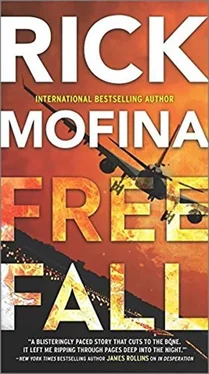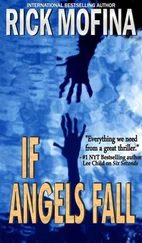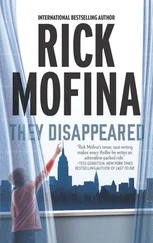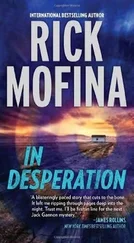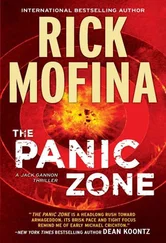He hated that he had to ignore the latest plea for help from Kate Page, especially since he’d invited her to keep him posted on matters concerning the Zarathustra threat.
Sorry, Kate, I just can’t get back to you right now .
Varner closed her most recent message on his phone and studied other information. The cyber team had not yet identified the source of the Zarathustra email. He was concerned because by this time, in the majority of cases, the FBI’s cyber experts would have yielded the information needed to provide a suspect, a physical address, a warrant and an arrest.
They had nothing like that so far.
But are they close? That’s what I need to know.
Varner’s concern had mounted since he’d been advised of the email the Kuwaitis had received shortly after the Shikra crash in London.
He read it again on his phone.
Sorrow and pain for one of your planes -Z
It lacked details. It was written in Kuwaiti Arabic but signed with a plain Z and it had been sent to a general public email comment box at the Kuwaiti Embassy in London some twenty-four hours after the crash. The Z -it could represent “Zarathustra.” In the wake of the Shikra crash, Kuwaiti intelligence had shared it with Scotland Yard and the UK’s National Crime Agency, and the FBI through its legal attachés at the US Embassies in London and Kuwait City. Investigators were working on determining the source, its credibility and any connection to the previous threat.
Varner stepped off the elevator into rows of white-topped desks that took up half the floor. Each was occupied with agents and cyber experts working nonstop on analyzing every type of suspected cyber activity imaginable.
Ron Sanchez’s face was bathed in the blue glow of the monitors at his desk, a portrait of sober concentration as he worked. The top button of his crisp white shirt was undone; his tie was loosened.
“Got anything for me?” Varner said.
Sanchez reached for his ceramic coffee mug and sipped from it without pulling his eyes from the three monitors at his station. He shook his head slowly.
“What do you make of the Kuwaiti email, Ron?”
“We’ve got Paplinksi and Wong on it and they’re in touch with the Brits and Kuwaitis.”
“Great. So where are we with Zarathustra?”
Sanchez’s shoulders rose as he inhaled, let his breath out slowly and turned to Varner.
“The sender of the email is using onion router technology. That is, they’re attempting to ensure secrecy by randomly routing the message through a multitude of places online, wrapped in layer upon layer of encryption.”
“We know that pattern’s been used before.”
“It’s standard on the Darknet, but in this case it looks like they may have custom-built their own software and written their own codes to create even more layers, possibly hundreds, that result in even more encrypted connections through relays on any given network.”
“So a little different than a run-of-the-mill hacker?”
“Yes, more sophisticated. And they’re using hidden servers.”
“Isn’t that how the child porn industry does it? And we’ve defeated them and tracked people down.”
“Correct, but what may be at work here is people who’re using off-the-grid servers, or servers that may be rented through third and fourth parties. Those servers could be anywhere-Latvia, Thailand, Romania, anywhere. Remember your basics, Nick. Our suspect pool is anybody with a computer and access to the internet.”
“So where are we, Ron?”
“We’re pulling in help from the National Cyber Investigative Joint Task Force. We’re hoping the Department of Defense, the CIA and the NSA might be able to give us a hand.”
“So we don’t yet have any names, any addresses, or anything for the foundation of a warrant?”
Sanchez shook his head.
“Ron, if they’re that good with email, do you think they have the skill to hack into a flight system and take control of a jetliner?”
“It’s our job to find out,” Sanchez said. “Look, Nick, I’m not going to sugarcoat this-whoever is behind the Zarathustra email is very smart and very good.”
La Laguna, Tenerife, Canary Islands
At the site on Mesa Mota Mountain, the young American tourist Veyda Hyde shaded her eyes and took in the sweeping view of the city below, the airport and the Atlantic Ocean.
Breezes with a hint of sea salt rolled up the mountainside and lifted strands of her hair.
“It’s so glorious up here, so tranquil.”
“Calming, almost spiritual. As it should be.” Seth, her boyfriend, turned to photograph the monument again. The couple was traveling with a local sightseeing bus, and the memorial on Mesa Mota was its most solemn stop. Seth marveled at the structure, a modern piece of artwork depicting a towering spiral staircase that ascended sixty feet, representing the connection between the earth and the sky.
The memorial plaque at its base said that it was erected in memory of the people killed in the aircraft accident at the Los Rodeos Airport below, where, in 1977, two 747 jumbo jets collided in the world’s worst aviation accident. Veyda and Seth were familiar with the history. Events leading up to the tragedy had unfolded when a bomb planted by a separatist terror group had exploded at Gran Canaria Airport on a nearby island. It had forced the diversion of a number of large international jetliners to the smaller Los Rodeos Airport at Tenerife. A sudden fog had enshrouded the area, reducing visibility as an airliner from Los Angeles taxied and another from Amsterdam prepared to lift off on the same runway. The poor weather and problematic radio communications with the air traffic control tower resulted in the two jets colliding on the runway, killing 583 people.
Veyda and Seth had joined the other tourists, studying the plaque, running their fingers over it, then touching the staircase and admiring the memorial wreathes, some of which were in various stages of decay.
Veyda covered a yawn with her hand.
Their pilgrimage to Tenerife was the latest among several others they’d made.
In recent weeks, they’d traveled to Japan, where they’d visited the site of the world’s second-worst aviation disaster, that of Japan Airlines Flight 123.
The aircraft, a 747 jumbo jet, was doomed some ten minutes after the plane had lifted off from Tokyo International Airport for Osaka, when the rear pressure bulkhead tore open due to a maintenance error. The incident had ruptured the hydraulic lines and led to the failure of the vertical stabilizer, making the plane impossible to control. The jet stayed aloft for half an hour before it crashed into Mount Takamagahara, some sixty miles northeast of Tokyo, killing 520 people.
As part of their pilgrimage to Japan, Veyda and Seth had rented a car and navigated their way to the village of Ueno-mura in Gunma Prefecture. Then they’d trekked to Osutaka, the mountainous crash site. There, they’d observed the memorial stone, the bell and the religious statue representing mercy. They’d also taken in the metal-wood-and-stone memorial posts that had been erected by victims’ families. The structures held the remains of those victims. Veyda had crouched for a closer look at the photographs, toys and notes families had left at the posts.
Afterward, they’d gone to Tokyo International Airport and visited the Safety Promotion Center, which housed a memorial to the tragedy. It displayed pieces of the wreckage and a history of events leading up to the accident. From the moment the bulkhead tore open, sealing the flight’s fate, it had remained airborne for half an hour before it crashed, giving some passengers time to write final messages to their families.
Читать дальше
Конец ознакомительного отрывка
Купить книгу
